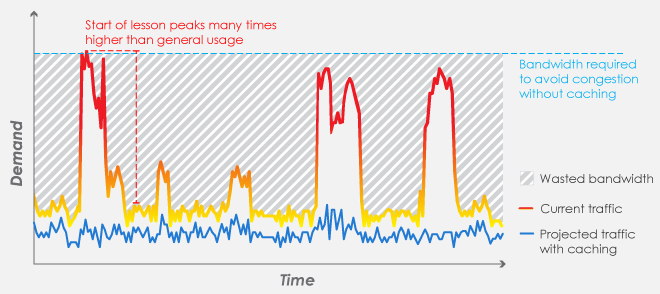The uniqueness of school web traffic, with its large ‘start-of-lesson’ spikes in demand (for mainly duplicate requests) has significant consequences for bandwidth management.
These infrequent peaks are often used to define how much bandwidth capacity a school needs. However, since these same peaks are highly cachable, caching can significantly reduce the amount of capacity needed.
If a school purchases bandwidth to cover these spikes in demand – without deploying caching – the amount of unused capacity is dramatic (as represented by the grey shaded area, below). Being unused MOST of the time, whether broadband is affordable or not, the excess capacity represents significant wastage of school funds.
Caching enables ‘burstable capacity’ at low cost – so schools can easily handle periodic surges in demand (typically 6-7 times higher than sustained traffic) while only paying for average throughput. It offers real value to rural schools because it delivers accessibility at a fraction of the cost of fibre.
The reality for E-learning is that capacity is not the real goal – speed of classroom browsing is. Affordability remains an important and constant goal, and caching is key to this; there is no upside to excessive bandwidth.

